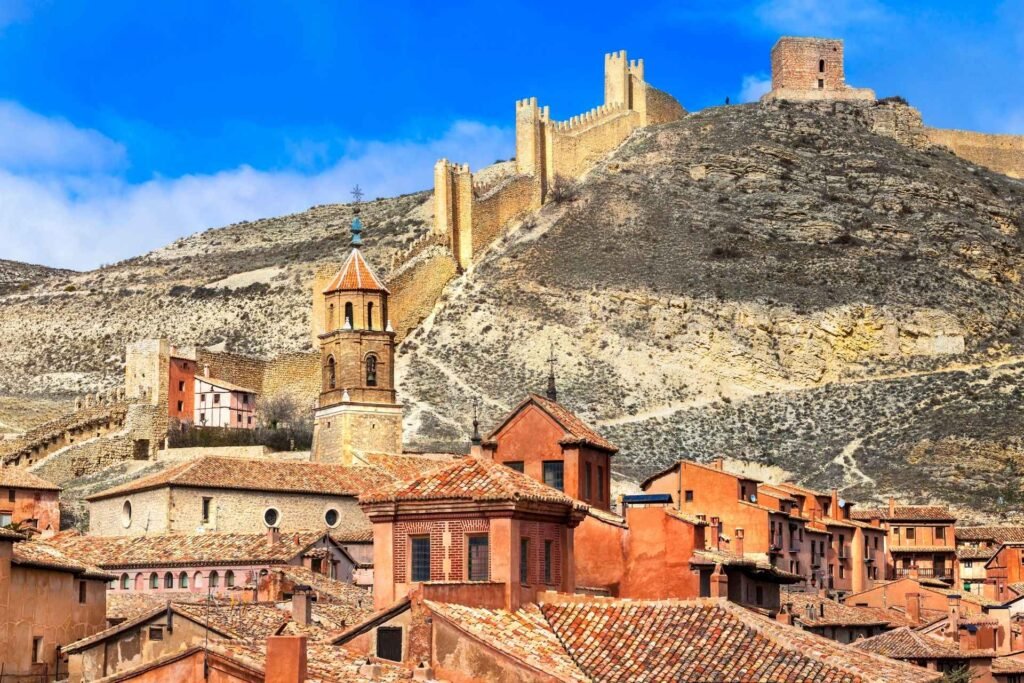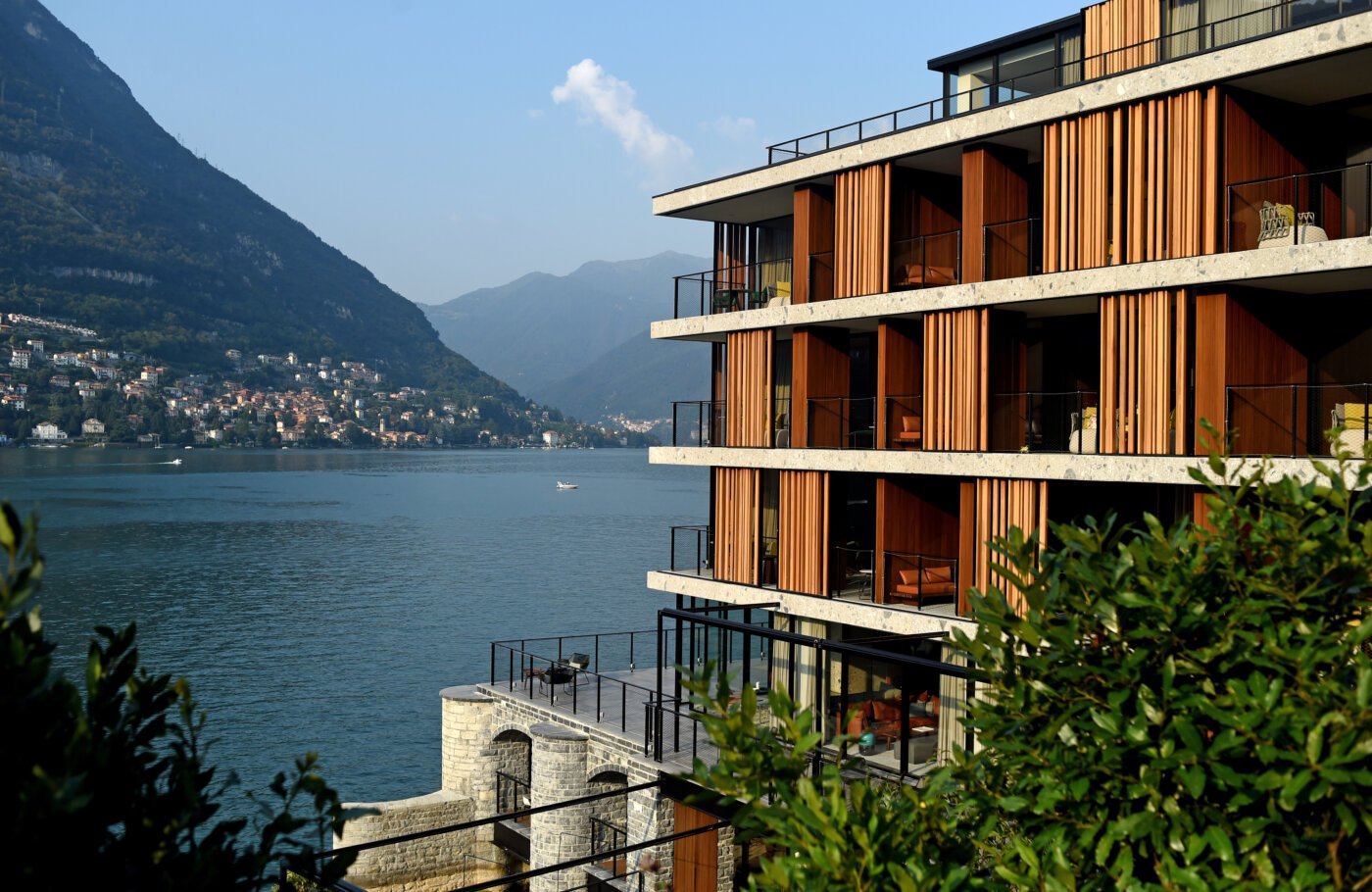Skip the Crowds, Keep the Charm! Small cities worth exploring
Picture walking down a cobblestone street where you can actually hear your footsteps, where the locals know each other by name, and where the only queue you’ll encounter is at the neighborhood bakery where everyone’s debating whether today’s sourdough is better than yesterday’s. This is the magic of exploring small cities – destinations that offer all the cultural richness and culinary delights of major capitals without the overwhelming crowds and tourist traps.
In an era where social media feeds are flooded with identical photos from overcrowded landmarks, small cities represent a refreshing alternative. They offer authentic experiences that can’t be replicated in tourist-heavy destinations, where interactions with locals happen naturally and where you can still discover places that feel like personal secrets rather than Instagram obligations.
The appeal of small cities lies not just in their size but in their preserved character. Unlike major metropolitan areas that constantly reinvent themselves, smaller cities maintain their historical essence while adapting to modern needs. They’re large enough to offer diverse experiences – from excellent restaurants to cultural attractions – yet small enough to explore thoroughly in a weekend, creating a perfect balance for travelers seeking depth over breadth.
The Authentic Experience of Smaller Destinations
Exploring small cities provides access to authentic local life that remains largely untouched by mass tourism. In these destinations, cultural experiences emerge organically from daily life rather than being manufactured for visitors. Local festivals aren’t tourist attractions but genuine community celebrations, neighborhood markets serve residents rather than tour groups, and restaurants focus on pleasing local palates rather than catering to international expectations.
There’s something magical about European small towns, and this magic extends to small cities that have maintained their intimate character while offering urban amenities. These destinations allow travelers to experience the rhythm of local life – morning coffee rituals, afternoon market visits, evening promenades – in ways that overcrowded tourist centers simply cannot provide.
The preservation of local traditions in small cities creates opportunities for cultural immersion that feel genuine rather than performative. Whether it’s watching artisans practice traditional crafts, participating in local festivals, or simply observing daily life in the central square, these experiences provide insights into regional culture that major cities often struggle to maintain amid their international character.
Small cities also offer unique opportunities for meaningful connections with locals. Without the protective barriers that residents of major tourist destinations often develop, people in smaller cities tend to be more open to interactions with visitors. These connections frequently lead to recommendations for hidden gems, invitations to local events, or simply conversations that provide deeper understanding of regional culture and history.
Culinary Discoveries in Intimate Settings
The culinary scene in small cities offers distinct advantages over their metropolitan counterparts. Small towns in Europe are worth visiting for the food alone, and this principle extends to small cities where local culinary traditions remain strong and authentic. Without the pressure to cater to massive tourist volumes, restaurants in these destinations can focus on quality, local ingredients, and traditional preparation methods.
Foodie tourism has evolved into a significant trend, with cities like Vienna, Rome, and Berlin drawing visitors for their culinary attractions, but small cities offer more intimate culinary experiences. Here, you might find yourself dining at a family-run restaurant where recipes have been passed down through generations, or discovering a local specialty that hasn’t been commoditized for tourist consumption.
The farm-to-table movement finds its most authentic expression in small cities, where restaurants can maintain direct relationships with local producers. These cities often sit in agricultural regions, providing access to fresh, seasonal ingredients that define regional cuisine. The result is dining experiences that truly reflect local terroir and seasonal rhythms, offering flavors that can’t be replicated in larger urban centers.
Small cities also provide opportunities to participate in food culture rather than simply consuming it. Local cooking classes, market tours, and food festivals in these destinations feel like genuine cultural exchanges rather than tourist activities. You might find yourself learning to make pasta from a nonna in an Italian hill town, or discovering the secrets of traditional brewing techniques in a small Czech city.

Hidden Architectural and Cultural Gems
Small cities often preserve architectural heritage more completely than major destinations, where development pressure has led to significant changes over time. From the colorful streets of Bosa in Italy to the medieval charm of Albarracín in Spain, these destinations offer concentrated doses of architectural beauty without the crowds that make appreciation difficult in famous locations.
The scale of small cities allows for comprehensive exploration of architectural styles and historical periods. You can walk through centuries of development in a single afternoon, observing how different eras have contributed to the city’s character. Medieval squares, Renaissance palaces, Baroque churches, and Art Nouveau buildings often coexist within walking distance, creating open-air museums of architectural history.
Museums and cultural institutions in small cities offer more intimate experiences than their counterparts in major destinations. Without massive tourist crowds, you can spend quality time with exhibits, engage with staff members who are often passionate local experts, and discover collections that reflect regional history and culture. These institutions frequently house surprising treasures – important artworks, historical artifacts, or specialized collections that would be major attractions in larger cities.
The cultural calendar in small cities often reflects genuine local interests rather than tourist-focused programming. Concert series, theater productions, art exhibitions, and literary events cater to local audiences while welcoming visitors who seek authentic cultural experiences. These events provide opportunities to observe local social dynamics while enjoying high-quality cultural programming.
Economic and Environmental Benefits
Exploring small cities offers significant economic advantages for travelers while providing meaningful benefits to local communities. Accommodation costs typically remain substantially lower than in major tourist destinations, allowing travelers to experience higher-quality lodging for their budget. Local restaurants, shops, and services also operate at more reasonable price points, making extended stays more affordable.
The environmental impact of small city tourism tends to be more sustainable than mass tourism to major destinations. These cities generally have better public transportation systems relative to their size, shorter distances between attractions, and less congestion. Many small cities have implemented progressive environmental policies, from pedestrian-friendly city centers to renewable energy initiatives, making them attractive destinations for environmentally conscious travelers.
Tourism revenue in small cities has more direct community impact than in major destinations where benefits often flow to international hotel chains and restaurant conglomerates. Local businesses, family-run establishments, and community-based services receive more direct benefit from visitor spending, creating positive economic cycles that strengthen local communities.
The carrying capacity of small cities allows for more sustainable tourism patterns. Without the overwhelming visitor numbers that strain infrastructure and community resources in major destinations, small cities can maintain better balance between tourism benefits and community well-being. This sustainability creates better experiences for both visitors and residents.
Practical Advantages of Small City Travel
The logistics of exploring small cities offer numerous practical advantages that enhance the overall travel experience. Most small cities can be explored thoroughly on foot, eliminating the need for complex transportation planning or expensive taxi rides. This walkability allows for spontaneous discoveries and creates more opportunities for cultural immersion.
Accommodation booking in small cities typically involves less competition and stress than in major destinations. Hotels and guesthouses often maintain more personal service standards, and many offer unique character that chain accommodations cannot match. The reduced demand also means greater flexibility in booking timeframes and better opportunities for upgrades or special accommodations.
Language barriers tend to be less intimidating in small cities, where locals often have more patience and time for communication with visitors. Many small cities in tourist regions have developed effective communication strategies that bridge language gaps while maintaining authentic local character. These interactions often become memorable parts of the travel experience.
The pace of life in small cities naturally aligns with vacation rhythms better than the frenetic energy of major metropolitan areas. Without the pressure to maximize every moment or navigate complex urban systems, travelers can relax into a more natural exploration pace that allows for deeper appreciation of their surroundings.
Seasonal Charm and Year-Round Appeal
Small cities often showcase seasonal changes more dramatically than major urban centers, where seasonal variations can be masked by constant activity and urban heat islands. Spring brings flower festivals and outdoor markets, summer offers extended daylight hours for exploration, autumn provides harvest celebrations and comfortable walking weather, and winter creates cozy atmospheres perfect for indoor cultural activities.
The Christmas season transforms many small European cities into fairy-tale destinations, with authentic holiday markets, traditional decorations, and seasonal foods that haven’t been commercialized beyond recognition. These celebrations often reflect genuine local traditions rather than tourist-focused attractions, providing more meaningful holiday experiences.
Summer in small cities often includes outdoor cultural programming – concerts in historic squares, theater performances in ancient amphitheaters, and festivals that celebrate local traditions. These events create opportunities for cultural immersion that complement the relaxed pace of warm-weather exploration.
Winter small city exploration offers unique advantages, from reduced tourist crowds to cozy indoor attractions like local museums, historic cafes, and traditional restaurants. Many small cities maintain strong cultural programming throughout winter months, providing compelling reasons to visit during off-peak periods when accommodation and dining costs are typically lower.

Regional Specialties and Local Traditions
Each small city typically represents the heart of its region’s cultural identity, making these destinations ideal for experiencing authentic regional specialties. Local crafts, traditional foods, regional wines, and cultural practices often find their purest expression in these smaller urban centers that serve as cultural capitals for their surrounding areas.
Bologna, the medieval city home to the world’s oldest university, famous for spaghetti bolognese, exemplifies how small cities can be the authentic source of cultural phenomena that become internationally recognized. These destinations offer opportunities to experience original versions of traditions that have been adapted or commercialized elsewhere.
Regional festivals and celebrations in small cities provide unparalleled opportunities for cultural immersion. Harvest festivals, religious celebrations, historical commemorations, and seasonal observances reflect genuine community traditions rather than tourist-focused events. Participation in these celebrations creates memories and understanding that extend far beyond typical tourist experiences.
The preservation of traditional crafts and industries in small cities creates unique shopping opportunities for travelers seeking authentic local products. From handmade textiles to traditional foods, local pottery to regional wines, these destinations offer access to products that reflect genuine local culture and craftsmanship.
The Social Dimension of Small City Exploration
Small cities facilitate social connections that are often difficult to achieve in major tourist destinations. The intimate scale of these communities creates natural opportunities for interaction with locals, from casual conversations in cafes to invitations to local events. These connections often provide insights into regional culture that no guidebook can offer.
The slower pace of life in small cities allows for more meaningful travel experiences, where chance encounters can develop into lasting memories. Without the pressure to maximize tourist attractions or navigate complex urban systems, travelers have more time and mental space for genuine cultural exchange.
Local social customs in small cities remain more visible and accessible than in major metropolitan areas where traditional practices may be confined to specific neighborhoods or communities. Observing and respectfully participating in local social rituals – from morning coffee ceremonies to evening promenades – provides deeper cultural understanding.
The community-oriented nature of small cities creates opportunities for travelers to contribute positively to local life, whether through participation in community events, support for local businesses, or simply through respectful engagement with local customs and traditions.
Planning Your Small City Adventures
Successful small city exploration requires different planning approaches than major destination travel. Research should focus on understanding local customs, seasonal patterns, and regional specialties rather than maximizing tourist attractions. The goal is cultural immersion rather than checklist completion.
Transportation to small cities often requires more flexibility and planning than major destinations served by international airports. However, the journey itself frequently becomes part of the experience, whether traveling by regional train through scenic countryside or driving through traditional villages that provide context for your destination.
Accommodation choices in small cities offer opportunities to support local businesses while experiencing authentic local hospitality. Family-run hotels, historic inns, and local guesthouses provide more character and personal service than chain accommodations, while often offering better value for money.
Communication with locals becomes more important in small cities, where tourist information may be less readily available in multiple languages. Learning basic phrases in the local language and carrying translation tools can enhance interactions and demonstrate respect for local culture.
The Enduring Appeal of Intimate Destinations
The movement toward exploring small cities represents a more sustainable and enriching approach to travel that benefits both visitors and local communities. These destinations offer authentic cultural experiences, genuine local interactions, and opportunities for meaningful discovery that overcrowded tourist centers cannot provide.
The best hidden gems in Europe include Italian mountain towns, unusual islands in Croatia, a detox spot in Sweden and an unusual ski resort, but the appeal of small cities extends beyond their hidden status. They offer consistent quality experiences, reliable infrastructure, and cultural depth that make them ideal destinations for travelers seeking substance over spectacle.
The future of sustainable tourism likely lies in the continued discovery and appreciation of small cities that can absorb visitor interest without losing their essential character. These destinations prove that meaningful travel experiences don’t require famous landmarks or massive scale – sometimes the most memorable journeys happen in places small enough to call you by name.
As mass tourism continues to strain popular destinations, small cities offer a compelling alternative that satisfies wanderlust while respecting local communities and preserving authentic cultural experiences. They remind us that the best travel experiences often come from places that feel like discoveries rather than destinations, where the journey of exploration reveals not just new places but new perspectives on what makes travel truly worthwhile.
Whether you’re drawn to the medieval charm of a Tuscan hill town, the thermal springs of a Hungarian spa city, or the literary heritage of a Czech cultural center, small cities await with their doors open and their stories ready to be shared. The only question is which one will capture your imagination first.
If you liked this article, check the other ones on Majestic Mondo website. Consider joining the Instagram community as well, to fully enjoy the beauty of our planet.




Leave a Reply